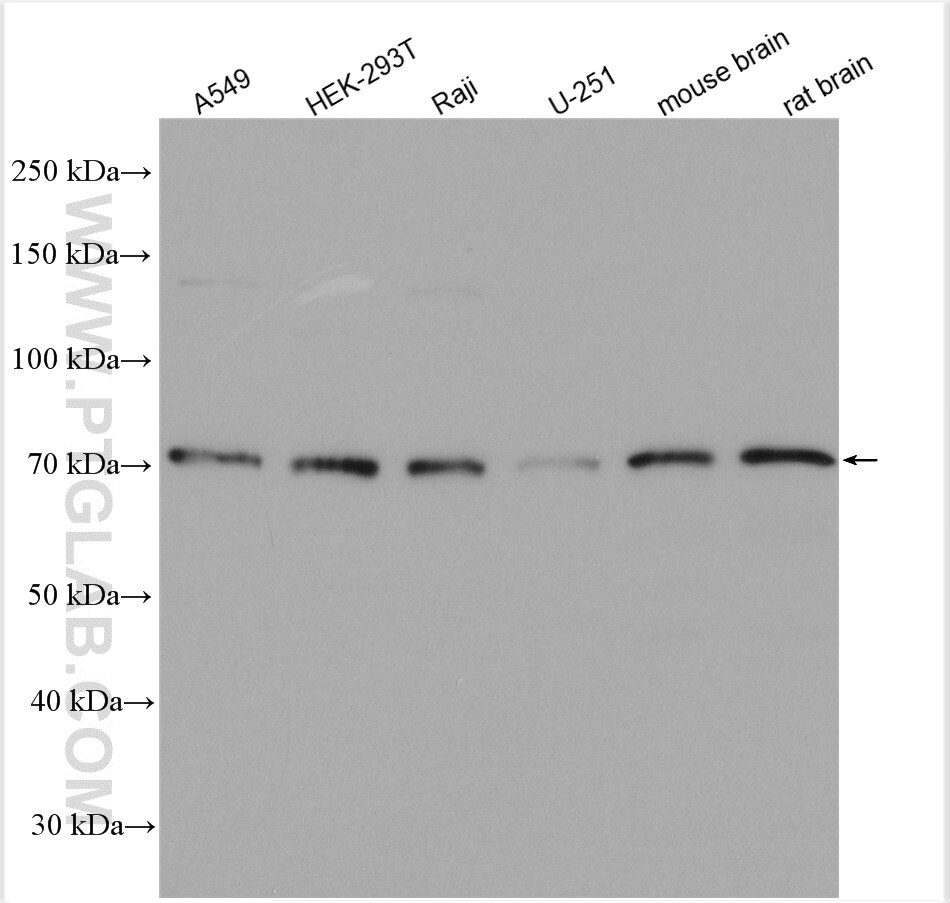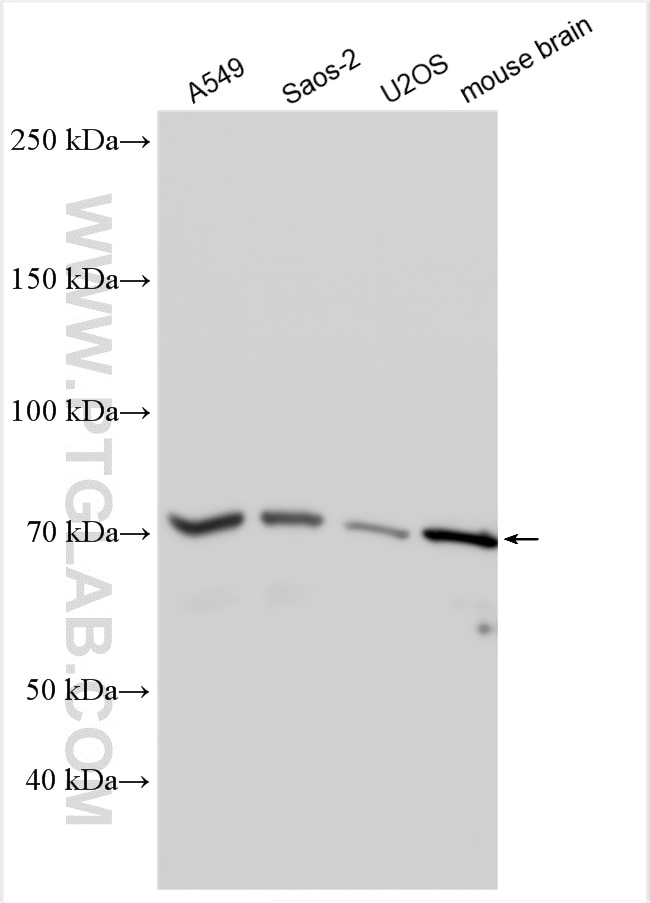Validation Data Gallery
Tested Applications
Recommended dilution
| Application | Dilution |
|---|---|
| It is recommended that this reagent should be titrated in each testing system to obtain optimal results. | |
Product Information
30022-1-PBS targets HIP14; ZDHHC17 in WB, IF/ICC, Indirect ELISA applications and shows reactivity with human, mouse, rat samples.
| Tested Reactivity | human, mouse, rat |
| Host / Isotype | Rabbit / IgG |
| Class | Polyclonal |
| Type | Antibody |
| Immunogen | HIP14; ZDHHC17 fusion protein Ag32654 相同性解析による交差性が予測される生物種 |
| Full Name | zinc finger, DHHC-type containing 17 |
| Calculated molecular weight | 73 kDa |
| Observed molecular weight | 70 kDa |
| GenBank accession number | BC050324 |
| Gene Symbol | ZDHHC17 |
| Gene ID (NCBI) | 23390 |
| Conjugate | Unconjugated |
| Form | Liquid |
| Purification Method | Antigen affinity purification |
| UNIPROT ID | Q8IUH5 |
| Storage Buffer | PBS only , pH 7.3 |
| Storage Conditions | Store at -80°C. |
Background Information
ZDHHC17 is a neuronal palmitoyl transferase. Post-translational modification by the lipid palmitate is crucial for the correct targeting and function of many proteins. Polyglutamine expansions of huntingtin protein are responsible for the Huntington neurological disorder. ZDHHC17 gene encodes palmitoyl transferase huntingtin interacting protein (HIP14) which regulates palmitoylation and distribution of hungtingtin. The latter is implicated in the formation of inclusion bodies and enhanced neuronal toxicity. HIP14 was also shown to control neurotransmitter release.


